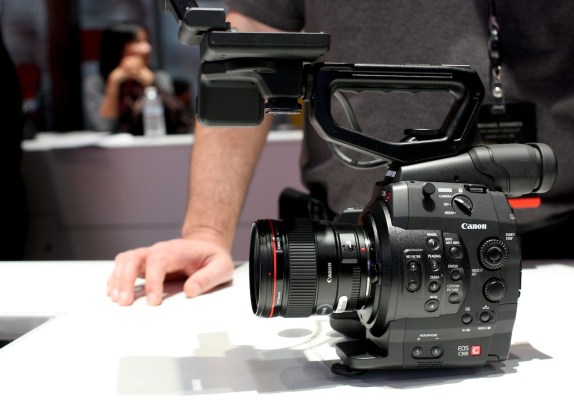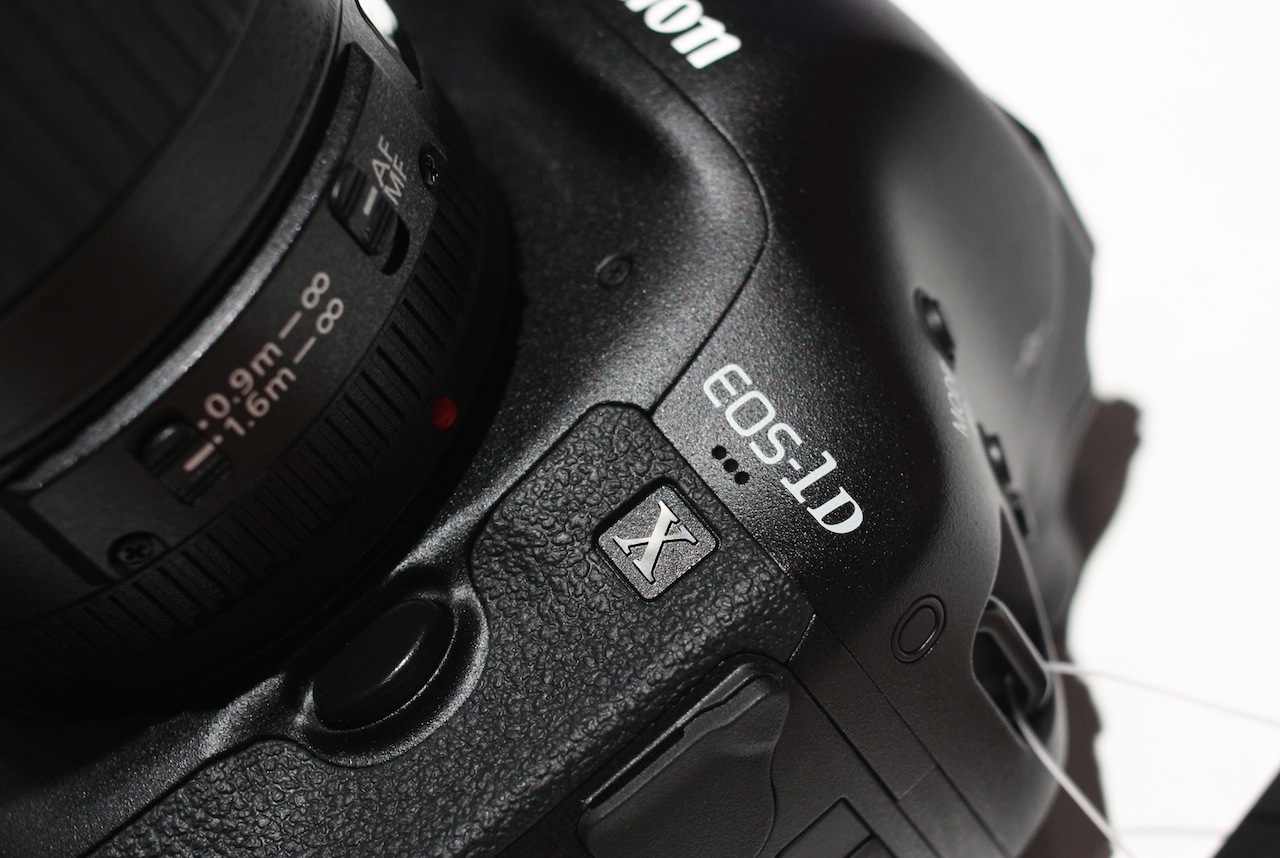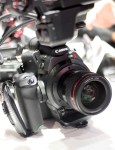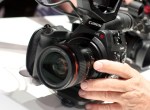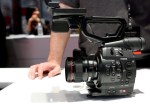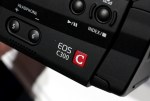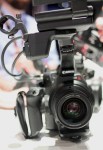Cinema tech isn’t a big focus on TechCrunch, but with Canon it makes sense, especially when that cinema tech represents a major overlap with consumer gear. The Cinema EOS line introduced last night is just that, and I’ve just had the chance to get my hands on the new C300 digital cinema camera (and a little quality time with the new 1D-X as well). I also got to put a few questions to Chuck Westfall, from Canon’s R&D department.
The most obvious thing about the new camera is how compact and handling-friendly it is. I sought out the most minimal setup, which is pictured above and (except for the lens) the default package for purchasing the C300. It was quite light and well-balanced, and the controls felt convenient for thumb or off-hand operation.
While I doubt any AAA features are going to be filmed on this micro setup, it does demonstrate how minimal the minimum viable camera unit is. I’m actually surprised that it comes with a built-in EVF, which isn’t particularly high-resolution (1.5 million dots, somewhere around 840×600 pixels or so) and is redundant for many filmmakers. And it does increase the options available.
I talked with Chuck Westfall about the camera, and he said that they had interviewed a lot of crews and cinematographers, who liked the small size and easy operation of DSLRs, but disliked the lack of ports and image quality issues. The C300 is a direct response to these concerns.
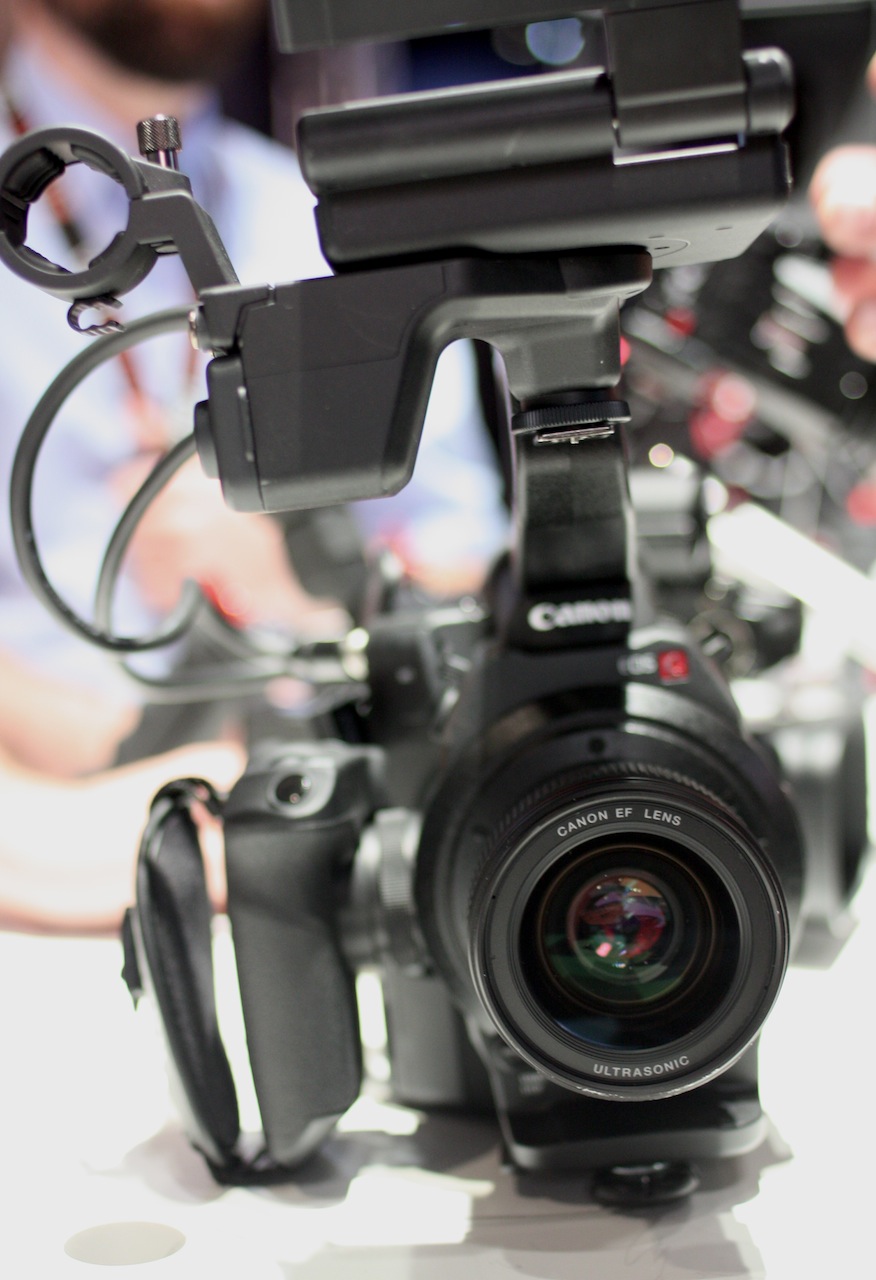 The lenses, too, are designed with motion photography in mind. The 360-degree focus ring and stepless iris (which feels smooth as butter and would be really nice to have in certain situations) are cinema-oriented, and they even gave the elements a different coating to reduce contrast and leave more up to the filmmaker. How the iris, which doesn’t use traditional stop numbers, will record or communicate that data to the camera is unclear, and Canon reps couldn’t answer my questions, citing the fact that most of the gear was pre-production. But they did confirm that aperture control is totally manual.
The lenses, too, are designed with motion photography in mind. The 360-degree focus ring and stepless iris (which feels smooth as butter and would be really nice to have in certain situations) are cinema-oriented, and they even gave the elements a different coating to reduce contrast and leave more up to the filmmaker. How the iris, which doesn’t use traditional stop numbers, will record or communicate that data to the camera is unclear, and Canon reps couldn’t answer my questions, citing the fact that most of the gear was pre-production. But they did confirm that aperture control is totally manual.
I asked about the choice to go with 1080p; RED’s announcement last night puts 4K recording at a very reasonable price and I was wondering whether Canon felt threatened. Westfall explained that “for an initial product” in the C series, they wanted it to fit into as many existing workflows as possible. Although 4K is clearly in Canon’s future (as demonstrated by the announcement of the 4K DSLR concept, they wanted to put something out that would plug right into the many productions that are shooting in 1080p. Which is a lot — you’d probably be surprised to hear how many are still shooting to tape or film.
As for RED’s product and how it related or competed with the C series, Westfall said diplomatically “the market is going to tell us which approach they prefer.” And while it’s true that RED’s Scarlet represents a serious value, the totally new workflow is only just beginning to make inroads on the industry at large, and the familiar Canon systems will still be preferred by many. Westfall convinced me of the company’s dedication to getting as much accuracy and quality from the sensor as possible, but comparisons will have to wait until the C300 hits studios.
Quick hands-on with the 1D-X
This thing is a beast. It’s enormous, heavy, and it takes pictures like a machinegun shoots bullets. I have serious gear envy.
Without looking closely at the shots it’s hard to say, but I saw a big increase in noise after around 12800 (naturally) – but it was a nice even noise pattern, not too chroma-y. The rapid fire is ridiculous. It’s very pro. Any real impressions other than this would take more time and more comparisons with other cameras and such, so I’ll just leave it at that. Specs and such are here.
